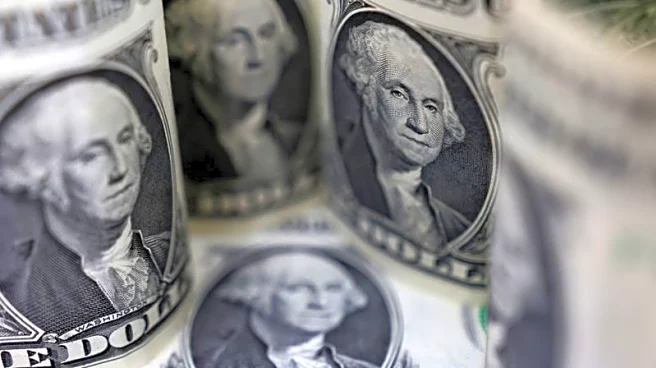What is the story about?
What's Happening?
The U.S. dollar has weakened against major currencies following the release of disappointing private-sector employment data. According to the ADP National Employment Report, private employment in the U.S. decreased by 32,000 jobs in September, contrasting with economists' expectations of a 50,000 job increase. This decline follows a revised drop of 3,000 jobs in August. The report has heightened expectations that the Federal Reserve may cut interest rates twice more this year. The dollar's decline is further compounded by the ongoing U.S. government shutdown, which began after the Senate failed to pass a short-term spending measure. This shutdown has halted the release of key economic data, including the Labor Department's employment report, adding to market uncertainty.
Why It's Important?
The weakening of the U.S. dollar and the potential for further interest rate cuts by the Federal Reserve could have significant implications for the U.S. economy. A weaker dollar may impact international trade by making U.S. exports more competitive but could also increase the cost of imports, contributing to inflationary pressures. The government shutdown adds another layer of complexity, as it disrupts the release of critical economic data, which investors rely on to make informed decisions. The uncertainty surrounding the shutdown and its duration could affect market stability and investor confidence. Additionally, the labor market's apparent softening may influence future monetary policy decisions, potentially affecting borrowing costs and economic growth.
What's Next?
The duration of the government shutdown will be a key factor in determining its impact on the economy and financial markets. If the shutdown persists, it could delay the release of important economic indicators, complicating the Federal Reserve's decision-making process regarding interest rates. Market participants will closely monitor any developments in Congress regarding budget negotiations. Meanwhile, the Federal Reserve's next policy meeting on October 29 will be pivotal, as it may provide further guidance on interest rate adjustments. Investors will also watch for any signs of recovery or further deterioration in the labor market, which could influence future economic policies.
AI Generated Content
Do you find this article useful?














